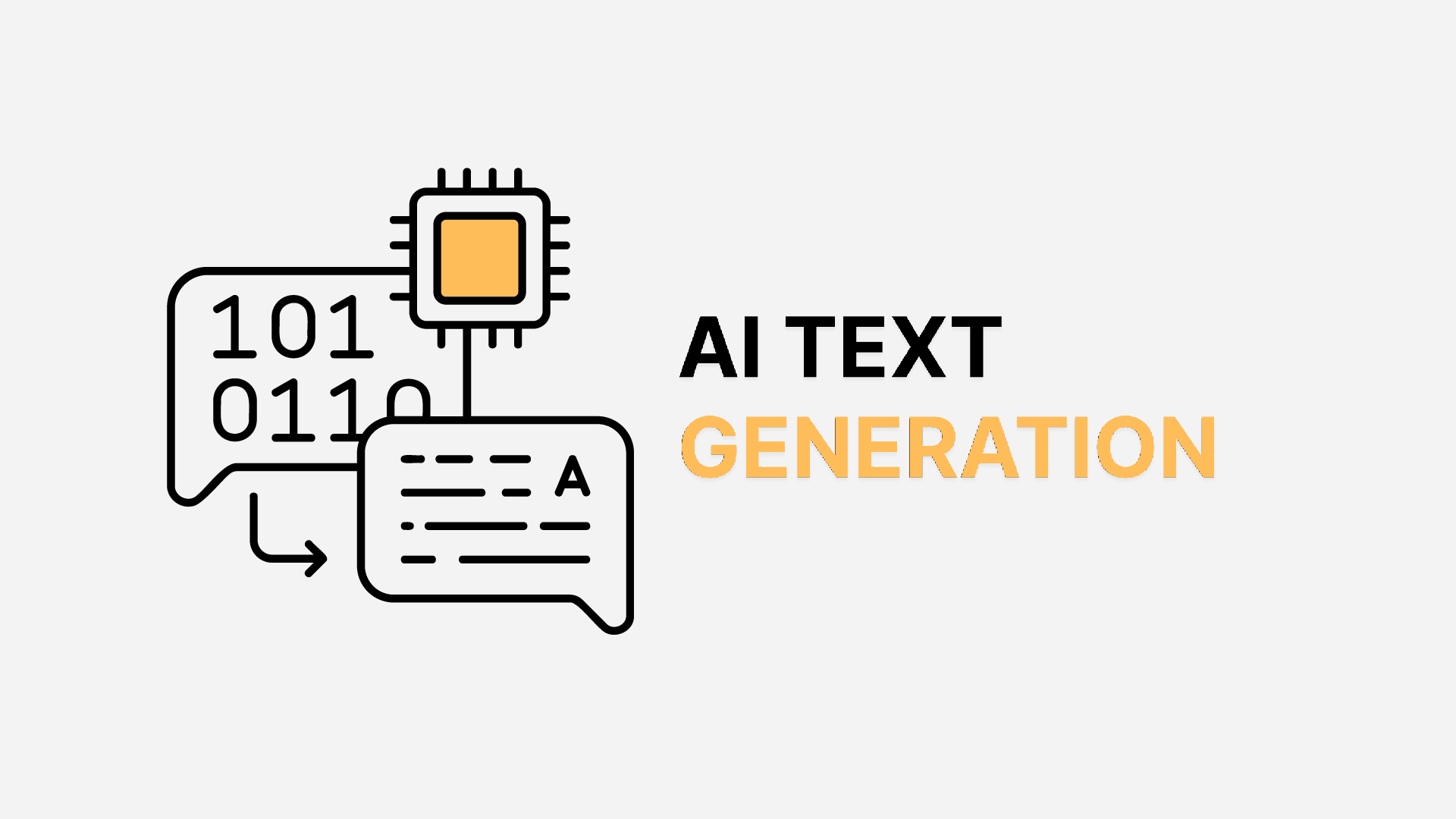
Automated text generation refers to the use of AI technologies to efficiently produce high‑quality content for businesses. This article offers a comprehensive overview of AI‑based text generation technologies, compares the different approaches, and shows how a structured implementation can save up to 80% of your content production time. The right combination of AI efficiency and human quality control is the key to success.
Automated text generation is the AI‑assisted creation of text content—either partially or entirely without manual writing. It uses two main technologies:
Since 2023, the technology has advanced rapidly: from simple text‑completion tools to complex content ecosystems that support the entire process—from ideation to performance measurement and optimization.
For companies, there are four core application areas:
Why automated text generation is indispensable today:
There are two different technological approaches to automated text generation—with distinct advantages and disadvantages. Choosing the right approach for specific use cases is critical to success:
What are RBMs? A technology that converts structured data into natural‑language text.
The RBM process follows this pattern:
What are RBMs particularly good for?
Our tool recommendations: RosaeNLG, Textengine, Axite
Modern generative AI models such as OpenAI o3 or Claude 4 are based on neural networks and operate differently:
What is generative AI particularly good for?
Our tool recommendations: Claude 4, OpenAI o3
Hybrid solutions that use both LLM‑ and RBM‑based methods can also be a good alternative (e.g., Textengine).
To identify the optimal solution for your content needs, it’s essential to ask yourself the following questions:
Human‑written
Rule‑Based Models (RBM)
Hybrid solutions
Large Language Models (LLM)
Reliability (based on 5,000 texts)
99% (no correction necessary)
99% (no correction necessary)
80% (human correction recommended)
30–70% (human correction recommended)
Scalability (text variants for different channels & languages)
0%
70–85%
70–85%
<10%
Cost per text (excl. license costs)
€6.00–15.00
€2.00–5.00
€1.00–3.00
€0.20–1.00
Overview of the different approaches to text creation | XANEVO
It has proven effective to prioritize the required texts according to their value to the company. This yields three content groups:
Using the XANEVO Cost‑Control Matrix, you can weigh quality requirements (= control over content) against the resulting costs. This ultimately determines the choice of the appropriate model solution.

Cost‑Control Matrix | XANEVO
To avoid assigning content to the three groups purely by gut feel and instead base it on economic factors, it’s worth calculating the potential value of content. Two simple formulas help assess opportunities and risks more clearly:
This formula shows the revenue a specific content item is likely to generate. It’s particularly suitable for sales‑relevant content such as product descriptions or landing pages.
Formula:
Content revenue = Page views × Conversion rate × Average basket value per category
Example:
5,000 page views × 0.02 conversion rate × €80 average basket value per category = €8,000 revenue per month
You can also evaluate risks with a simple calculation—especially for legally sensitive content. The following formula helps:
Formula:
Compliance damage = Number of faulty items within a category × Average damage per error
What is the “average damage per error per category”? This is an empirical value that you (or your company) can define over time.
Examples:
Example: The average potential damage per error is €12,083.
These calculations help make the value of content measurable—in terms of both revenue potential and liability or reputation risk. This allows you to decide which content merits higher‑end text models and human resources—and where cost‑efficient automation suffices.
A Europe‑wide furniture reseller based in Germany sells over 30,000 products across several international sales channels.
Manual creation of product texts was time‑consuming: listing new items online was delayed by up to a month.
The company is growing rapidly and continuously expanding its assortment. At the same time, internal resources are limited—especially in content creation and localization. The company therefore sought a scalable solution to…
Challenge
Scalable creation and maintenance of high‑quality, marketplace‑ready, and GEO‑optimized product texts in four languages, with a growing assortment and limited internal capacity.
Solution
A hybrid approach combines people, rule‑based models, and LLM‑based text generation. Based on structured PIM data, this enables automated, search‑engine‑optimized product texts that can be localized into multiple languages.
Why a hybrid approach?
The client conducted a robust cost‑benefit analysis based on the formula:
Content revenue = Page views × Conversion rate × Average basket value per category
This allowed them to calculate the revenue contribution per category and determine which technology would be most economical in each case.
The result:
Decision criteria:
Outcomes:
By introducing the hybrid text generation approach, the creation and localization of product descriptions accelerated significantly—resulting in product listings 80% faster and enabling the company to place new items much earlier across its international sales channels, thereby realizing revenue potential more quickly.
Step 1: Audit and goal setting
Pro tip: Define your ROI expectations clearly.
Step 2: Tool selection and pilot phase
Pro tip: Start with low‑creativity but labor‑intensive content formats.
Step 3: Process integration and training
Pro tip: Define responsibilities clearly!
Step 4: Measurement and continuous optimization
As powerful as automated text generation is today, it’s not the answer to every content challenge. Particular issues arise around the following topics:
There is also a central ethical question:
Does automated text generation take people’s jobs?
A frequently debated issue around AI adoption is whether AI applications will completely replace human writers. In practice, many companies do aim for exactly that—either for cost reasons or in the hope of maximum efficiency.
What’s often overlooked: good texts aren’t created by stringing words together alone. Persuasive content is grounded in knowledge of target audiences, brand messaging, tone of voice, and communication goals—none of which AI can independently grasp or evaluate. Creative depth, genuine opinions, or surprising perspectives are also only partially reproducible in automatically generated texts. While simple, repetitive writing tasks can indeed be handled efficiently by AI, creative and strategic quality assurance remains a human responsibility. An experienced writer understands why a text works—AI produces probabilities. Companies that dispense with their teams’ expertise risk mediocre results and leave potential untapped.
Automated text generation is a valuable tool—when used deliberately, critically, and responsibly. Companies should define clear rules for usage, oversight, and communication to harness opportunities without overlooking risks.
AI‑assisted text generation is no longer a future topic in 2025; it’s a proven means of boosting efficiency in content management. Companies that establish structured processes, suitable tools, and clear quality standards can reduce production times by up to 60% while delivering consistent, on‑brand content at scale. The combination of rule‑based systems and generative AI allows a tailored selection by use case—from product descriptions and newsletters to SEO texts. What matters is a strategic plan for deploying the different technological approaches.
That’s exactly why we at XANEVO developed our Cost‑Control Matrix. It enables you to categorize the content you need and identify the best approach for your use case.
The success formula:
People for quality: emotional depth, fact‑checking, strategic steering


Managing Director & Founder @ Xanevo
I help companies leverage the potential of AI and automation in a meaningful and economical way.
The focus is not on ready-made products, but on customized technological solutions that deliver real added value. My goal: to reduce complexity and create competitive advantages—without buzzwords, but with a clear focus on impact.
Diesen Beitrag teilen